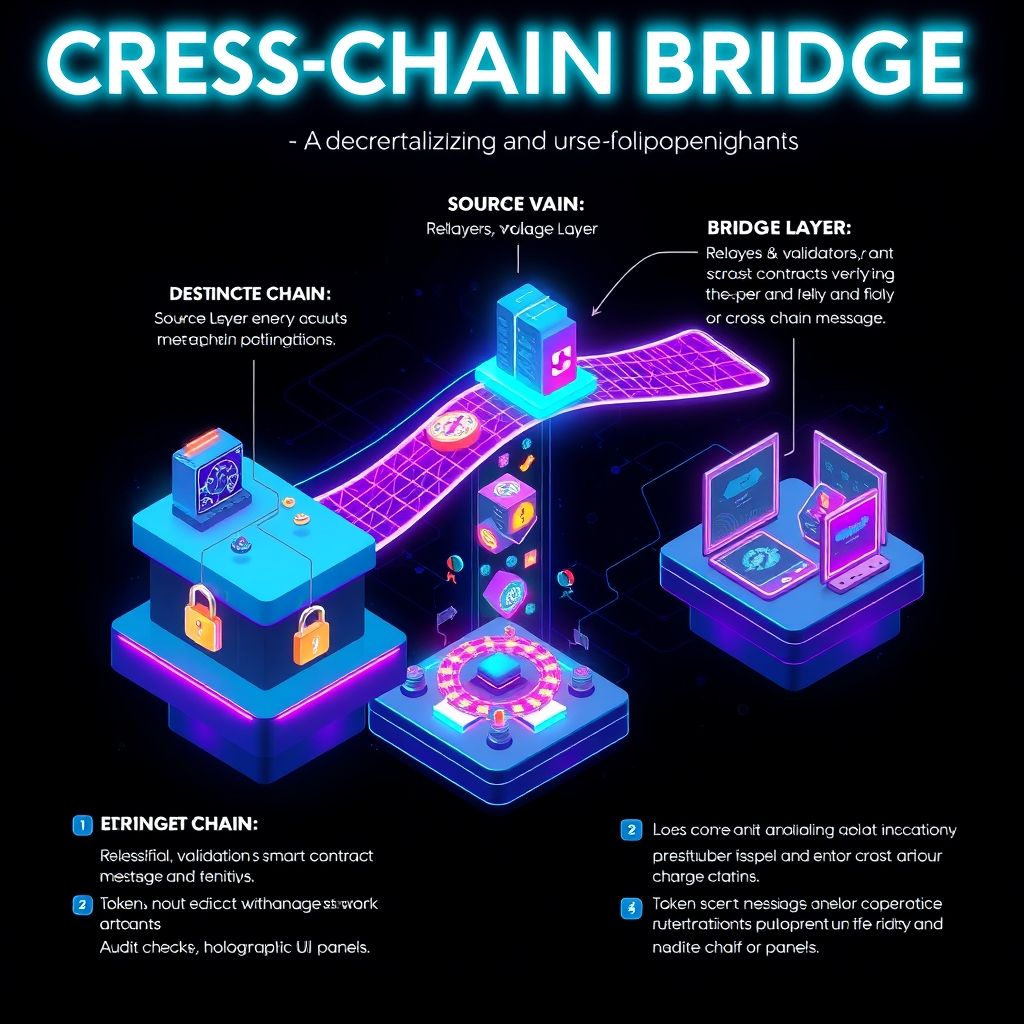How do cross-chain bridges work in decentralized finance?
How do cross-chain bridges work in decentralized finance?
Introduction
In DeFi, liquidity lives on many chains, each with its own strengths. A trader might want to move funds from Ethereum to Solana to speed up a trade, or pull a USDC from a Layer 2 back to a mainnet for a liquidity boost. Cross-chain bridges are the rails that connect these islands. They’re not magic portals, but carefully designed systems that securely transfer value across ecosystems. I’ve watched the space evolve from clunky, trust-heavy bets to smarter, more modular bridges, and the trade-offs are a constant reminder: moving value across chains comes with opportunities and risk in equal measure.

HOW CROSS-CHAIN BRIDGES WORK
- Lock-and-mint model: The origin asset is locked on the source chain, and a corresponding representation is minted on the destination chain. When you redeem, the wrapped asset is burned and the original is unlocked. This keeps the total supply in check across networks.
- Wrapped assets and liquidity: Wrapped tokens (like wETH or wrapped BTC) let you use familiar DeFi primitives on chains that don’t natively support the asset. Bridges rely on liquidity pools to back those wrapped actors, so you’re not selling air when you swap.
- Relayers and validators: A network of validators or relayers confirms that funds were locked and that the destination token can be issued. Finality often depends on the bridge’s security model and its consensus mechanism.
- Security design space: Some bridges are optimistic, assuming the system is honest most of the time and only proving fraud if a bad event is detected; others bake in real-time verification or robust fraud proofs. Each choice shapes risk and throughput.
KEY POINTS AND FEATURES
- Trust model and risk: Bridges inherit counterparty risk from the validators and the protocol design. History matters—not every bridge survives a hack or a misconfiguration.
- Finality and latency: Some bridges settle quickly, others add a delay to ensure cross-chain proofs are correct. If you need near-instant movement, you’ll trade some security or pay a premium.
- Liquidity depth: The ability to move large sums smoothly depends on bridging liquidity. A shallow bridge can cause slippage or failed transfers.
- UX realities: Users often interact through dashboards that aggregate multiple bridges and show estimated fees, timings, and risk signals. Good tools help, but they won’t remove all complexity.
RELIABILITY, RISK MANAGEMENT, AND STRATEGIES
- Diversify bridges for big moves; don’t rely on a single conduit for core positions.
- Check asset compatibility and audit history; prefer bridges with public audits and incident post-mortems.
- Use analytics and charting tools to time moves and monitor bridge health indicators, such as congestion, fee spikes, and finality delays.
- For leverage-minded traders, keep risk margins modest and avoid stacking leverage across bridges. A sudden bridge halt or delay can amplify losses.
TRADING ACROSS ASSET CLASSES
Cross-chain access unlocks forex, stock-like indices, crypto pairs, commodities, and synthetic assets on DeFi rails. You might hedge a USD exposure by moving liquidity to a chain with a different Derivatives market, then reimport it. The skill is balancing the speed and cost of the bridge with your risk appetite and the instrument’s volatility.
FUTURE TRENDS: SMART CONTRACTS, AI, AND BEYOND
Smart contracts will automate routine bridging checks, reducing manual error. AI-driven strategies could optimize route selection, timing, and position sizing across multiple bridges and chains, while on-chain oracles improve price accuracy and settlement integrity. Expect a future where seamless, multi-chain liquidity presents a more resilient DeFi ecosystem—yet bridges will remain a focal point of security debates and regulatory scrutiny.
Slogan/Promotion
Bridge assets, widen your liquidity, and trade with confidence across the chains you trust. Cross-chain freedom, inside a secure framework.
Closing thought
Decentralized finance keeps redefining how we access markets. Bridges are the current backbone for multi-chain activity, offering new opportunities while demanding careful risk management. If you’re exploring advanced tech, safety, and charting tools, you’ll find a growing, intelligent landscape where AI-assisted, smart-contract-backed trading becomes a natural extension of traditional markets.
YOU MAY ALSO LIKE




